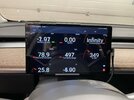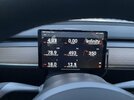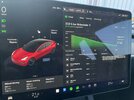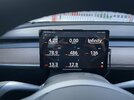Not that this is news to anybody, but driving an SR+ in the cold weather we just had sucks up the battery. I went from 220 miles down to under 100 from doing 4 10 mile trips. I guess the car never gets a good chance to warm up with that kind of driving. Temps were in the single digits F with strong winds like a lot of the country.
I also tried to charge it in the cold with no time to pre-condition the battery and that was also super slow.
After a few days up in Syracuse, NY (thankfully not Buffalo) I drove back to NYC with temps in the mid 20s and the usage pretty much sucked there too but wasn't as bad as driving around Syracuse. We made more charging stops than I would normally because I couldn't get a good sense of range since the stated range was useless. Wh/Mi was in the 260-280 range, usually I get 220-230 on the highway in better weather, and 180-200 around town.
The good news to me was that the car handled pretty well on the icy/snowy roads.
I also tried to charge it in the cold with no time to pre-condition the battery and that was also super slow.
After a few days up in Syracuse, NY (thankfully not Buffalo) I drove back to NYC with temps in the mid 20s and the usage pretty much sucked there too but wasn't as bad as driving around Syracuse. We made more charging stops than I would normally because I couldn't get a good sense of range since the stated range was useless. Wh/Mi was in the 260-280 range, usually I get 220-230 on the highway in better weather, and 180-200 around town.
The good news to me was that the car handled pretty well on the icy/snowy roads.






